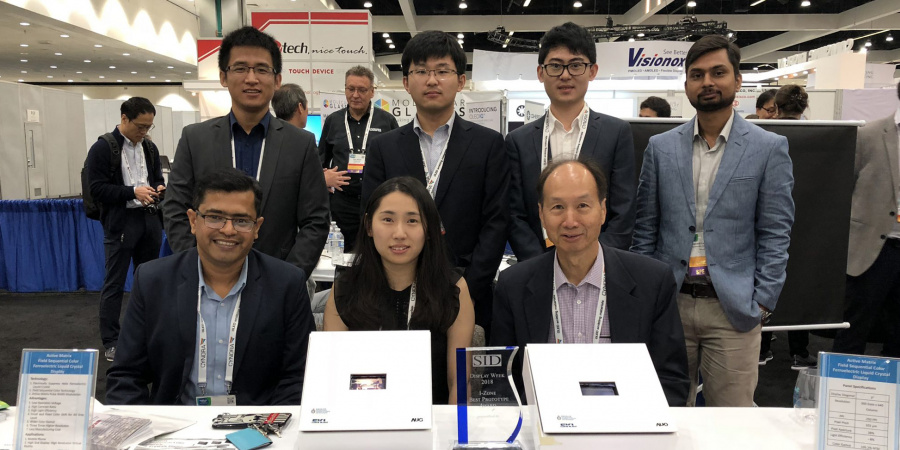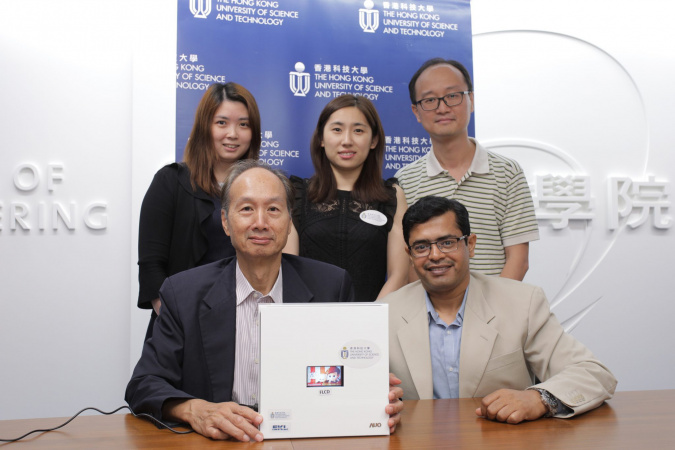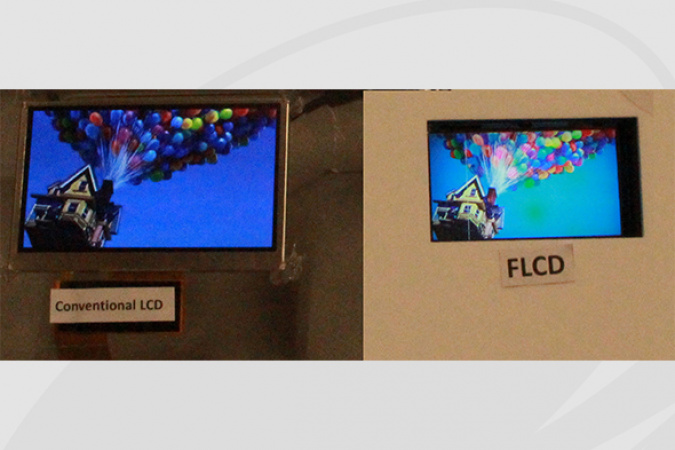HKUST Develops a New Generation of LCD with Higher Efficiency, Resolution and Color Performance
A research team from the State Key Laboratory on Advanced Displays and Optoelectronics Technologies of the Hong Kong University of Science and Technology (HKUST) has developed a new Liquid-crystal display (LCD), which image resolution, energy efficiency as well as color saturation were markedly enhanced, achieving a crucial breakthrough in display technology.
Known as Active Matrix Ferroelectric Liquid Crystal Display (FLCD) – this latest technology developed by a research team led by Chair Professor from the Department of Electronic and Computer Engineering Prof Hoi-Sing Kwok, will see energy efficiency jumped by 3-5 times, and image resolution enhanced by three times – at a lowered cost.
Conventional displays have limited energy efficiency, as color filters block and consume 70% of the backlight and energy. To replace color filters, the team developed a field sequential color technology – enabled by fast ferroelectric liquid crystal, which allows display of color images sequentially in time. This technology relies on human vision to fuse these fast-switching images into a full-color picture, so color filters are no longer necessary. As color filters usually make up 30% of a display’s manufacturing cost, its removal result in a cheaper cost of this higher quality FLCD in comparison to its traditional counterparts.
Color saturation of the new display is also boosted as the team adopted RGB LED for the backlight instead of the commonly used LED. RGB LED’s narrow spectrum contributes to wider color gamut (ranges of color), allowing FLCD to outperform any display alternatives available today. Its image resolution also increased by three times as the sub-pixels for different colors are removed.
“The FLCD requires relatively low power consumption, so it is highly suitable for portable electronic devices such as smartphones, tablets and laptops, which batteries can live longer than they do now. The new display could also be applied in high-end displays such as virtual reality headsets and head-mounted displays with its higher resolution and color performance,” Prof Kwok said.
Developed in collaboration with AU Optronics (AUO) from Taiwan, Prof Kwok’s team has recently won the “Best Prototype in Innovation Zone” award with this new technology from the Society for Information Display.
(This news was originally published by the HKUST Public Affairs Office here.)



